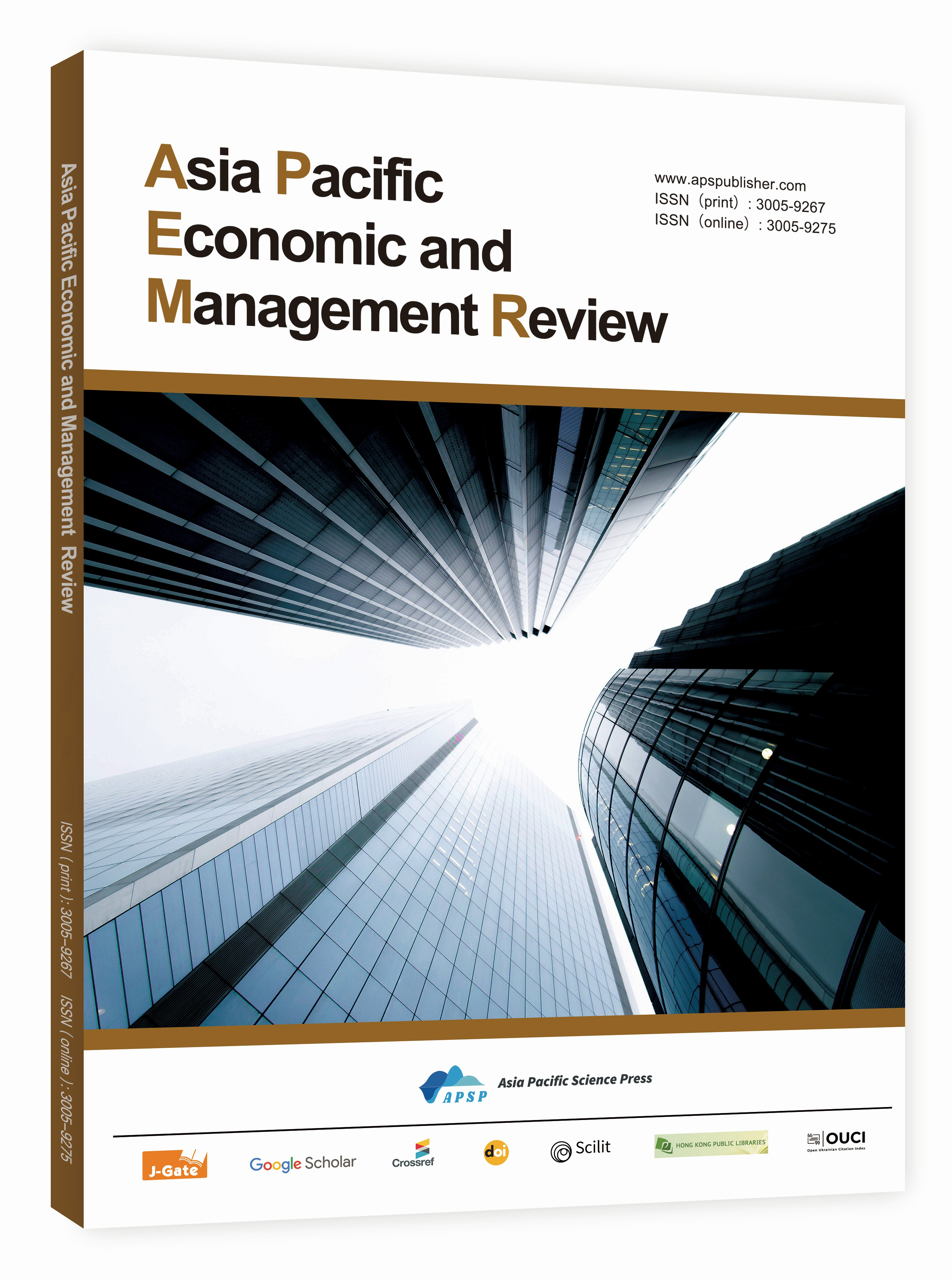Research on the Optimization of the Path of Green Fiscal and Tax Policies to Enable the “Dual Carbon” Goals
——A Synergistic Perspective Based on Carbon Tax and Green Bond
DOI:
https://doi.org/10.62177/apemr.v2i3.375Keywords:
Green Fiscal and Tax Policies, Dual Carbon Targets, Carbon Tax, Green Bonds, Synergistic EffectAbstract
To achieve the "dual carbon" goals, green fiscal and tax policies have become a key tool for promoting low-carbon transformation. This article focuses on the synergistic effects of carbon taxes and green bonds, exploring their complementary mechanisms in emission reduction incentives, resource allocation, and risk sharing, and proposing optimization paths. The study finds that carbon taxes curb high-carbon behaviors through price signals, while green bonds support low-carbon projects through financing. Their synergy can significantly enhance policy effectiveness. It is recommended to build a three-pronged green fiscal and tax system of "incentives-constraints-guarantees" through institutional alignment, market linkage, and policy optimization.
Downloads
References
An, Z. R. (2025). Considerations on the Application of Legal Systems for Green Bonds in China. Cooperative Economy and Science, (7), 181-183. doi:10.13665/j.cnki.hzjjykj.2025.07.037.
Wang, H. J. International Experience and Enlightenment of Enterprise Green Financing Mechanism under the Dual Carbon Goals. Communication of Finance and Accounting, 1-8. doi:10.16144/j.cnki.issn1002-8072.20250315.002.
Yang, L., Wu, T., & Wang, J. H. (2025). Research on the Experience and Lessons of International Carbon Tax Policies. Communication of Finance and Accounting, (5), 157-161+167. doi:10.16144/j.cnki.issn1002-8072.2025.05.021.
Huo, Y. F., Tang, H. Y., Han, P., & Hu, H. J. Research on Emission Reduction Technology Innovation Strategies in Supply Chains under Carbon Tax Policies Based on Different Cooperation Models. Industrial Engineering and Management, 1-20.
Shen, J. F., & Gao, J. L. (2025). Mechanisms, Problems, and Countermeasures of Fiscal and Tax Policies Promoting China’s Green and Low-Carbon Development. Theoretical Exploration, (1), 158-164. doi:10.16354/j.cnki.23-1013/d.2025.01.015.
Xing, W. B., Liu, H. L., & Zhu, Q. H. (2024). Green Capital Allocation and Risk Premium—Evidence from China’s Green Bond Market. Nanjing Journal of Social Sciences, (12), 52-63+154. doi:10.15937/j.cnki.issn1001-8263.2024.12.006.
Research Group of Jiangxi Provincial Tax Service of State Taxation Administration, Fan, Z. G., Lai, Z. H., & Gong, Y. B. (2024). Research on the Construction and Realization Path of China’s Green Tax System under the “Dual Carbon” Goals. International Taxation in China, (12), 3-12. doi:10.19376/j.cnki.cn10-1142/f.2024.12.005.
Mu, T. (2024). Research on Fiscal and Tax Policies to Promote the Realization of “Dual Carbon” Goals. Journal of Shanxi Finance and Tax College, 26(5), 3-8.
Wang, C., & Zhang, B. H. (2024). Research on the Development of Green Asset Securitization under the Background of “Dual Carbon” Goals. Journal of Jilin Business and Technology College, 40(5), 96-99+116. doi:10.19520/j.cnki.issn1674-3288.2024.05.006.
Li, D., & Li, C. H. (2024). ESG Ratings, Digital Transformation, and Enterprise Green Innovation. Research of Finance and Accounting, (7), 65-71.
Zhang, X. J. (2024-06-20). Analysis of Green Fiscal and Tax Policies Promoting Healthy and Sustainable Economic Development in Henan Province under the “Dual Carbon” Goals. Henan Economic Daily, 011.
Liu, C. Y. (2024). Suggestions for the Development of Green Asset Securitization under the “Dual Carbon” Goals. Finance and Accounting, (10), 69.
Yin, X., & Huang, C. Y. (2023). Research on Fiscal and Tax Policies and Financial Policies to Promote the Green Transformation of Manufacturing Industry. Local Finance Research, (7), 28-39.
Tong, J. (2022). Research on the Coupling Mechanism of Green Fiscal and Tax Policies under Carbon Neutrality Constraints. Management Review, 34(8), 15-28. doi:10.14120/j.cnki.cn11-5057/f.2022.08.017.
Liu, R., Yu, Y. J., & Liu, R. S. (2022). Development of Green and Low-Carbon Industries and Fiscal and Tax Policy Support. Taxation Research, (6), 97-101. doi:10.19376/j.cnki.cn11-1011/f.2022.06.003.
Liu, S. X. (2021). Optimizing Fiscal and Tax Policies for Green and Low-Carbon Transformation to Provide Important Support for Achieving “Dual Carbon” Goals. New Energy Technology, (12), 35-36.
Tian, Z. Y., & Yang, H. W. (2013). Suggestions for Improving Green Fiscal, Tax, and Financial Policies. Macroeconomic Management, (10), 24-26. doi:10.19709/j.cnki.11-3199/f.2013.10.008.
Mei, J. M., Zhou, C. G., & Xu, L. M. (2006). Constructing a Green Fiscal and Tax Policy System. Public Finance Research, (9), 8-10. doi:10.19477/j.cnki.11-1077/f.2006.09.003.
Downloads
How to Cite
Issue
Section
License
Copyright (c) 2025 Xinyao Li, Xuandong Zhang

This work is licensed under a Creative Commons Attribution-NonCommercial 4.0 International License.
DATE
Accepted: 2025-05-26
Published: 2025-06-09

















